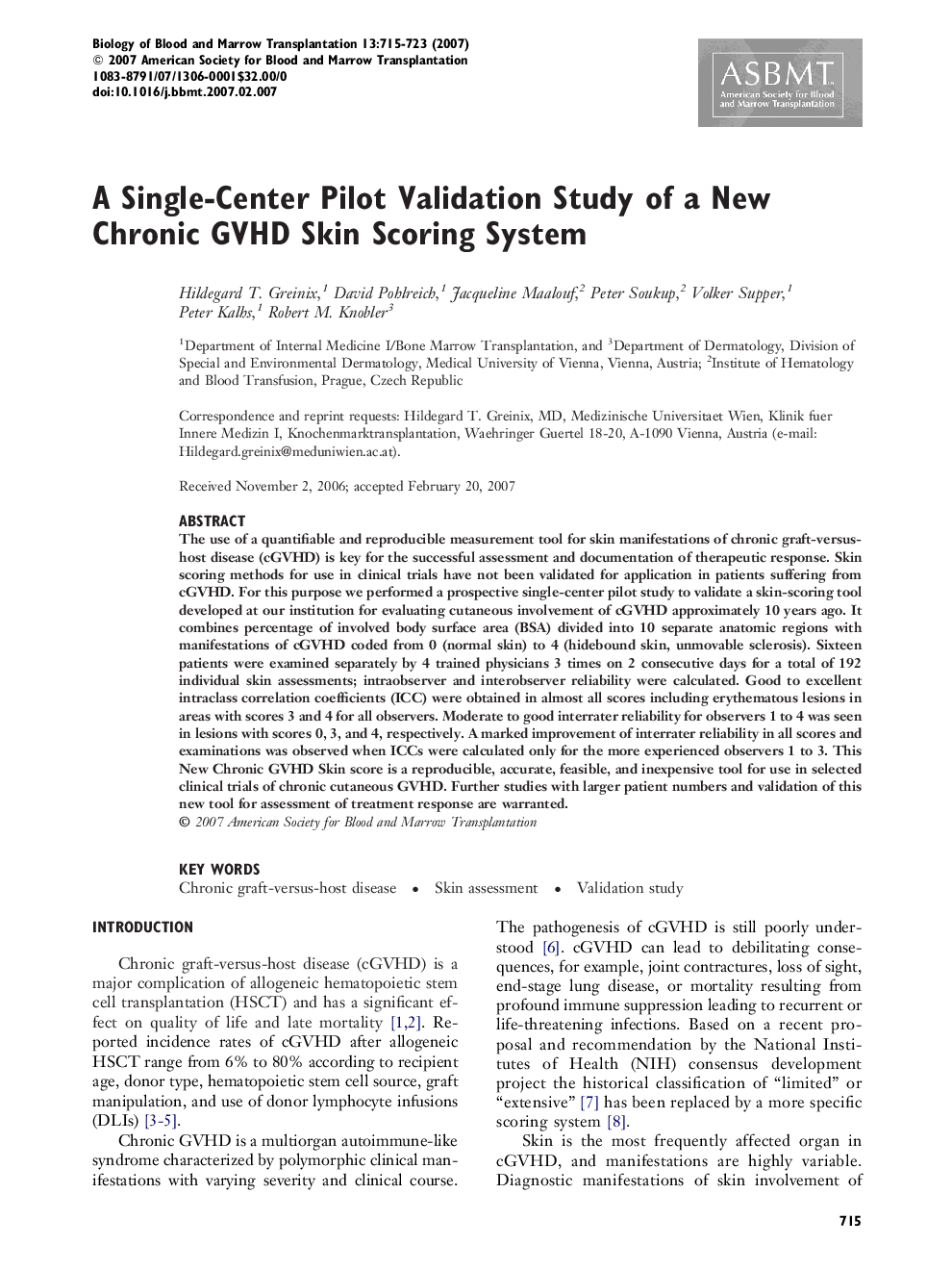| Article ID | Journal | Published Year | Pages | File Type |
|---|---|---|---|---|
| 2105059 | Biology of Blood and Marrow Transplantation | 2007 | 9 Pages |
The use of a quantifiable and reproducible measurement tool for skin manifestations of chronic graft-versus-host disease (cGVHD) is key for the successful assessment and documentation of therapeutic response. Skin scoring methods for use in clinical trials have not been validated for application in patients suffering from cGVHD. For this purpose we performed a prospective single-center pilot study to validate a skin-scoring tool developed at our institution for evaluating cutaneous involvement of cGVHD approximately 10 years ago. It combines percentage of involved body surface area (BSA) divided into 10 separate anatomic regions with manifestations of cGVHD coded from 0 (normal skin) to 4 (hidebound skin, unmovable sclerosis). Sixteen patients were examined separately by 4 trained physicians 3 times on 2 consecutive days for a total of 192 individual skin assessments; intraobserver and interobserver reliability were calculated. Good to excellent intraclass correlation coefficients (ICC) were obtained in almost all scores including erythematous lesions in areas with scores 3 and 4 for all observers. Moderate to good interrater reliability for observers 1 to 4 was seen in lesions with scores 0, 3, and 4, respectively. A marked improvement of interrater reliability in all scores and examinations was observed when ICCs were calculated only for the more experienced observers 1 to 3. This New Chronic GVHD Skin score is a reproducible, accurate, feasible, and inexpensive tool for use in selected clinical trials of chronic cutaneous GVHD. Further studies with larger patient numbers and validation of this new tool for assessment of treatment response are warranted.
